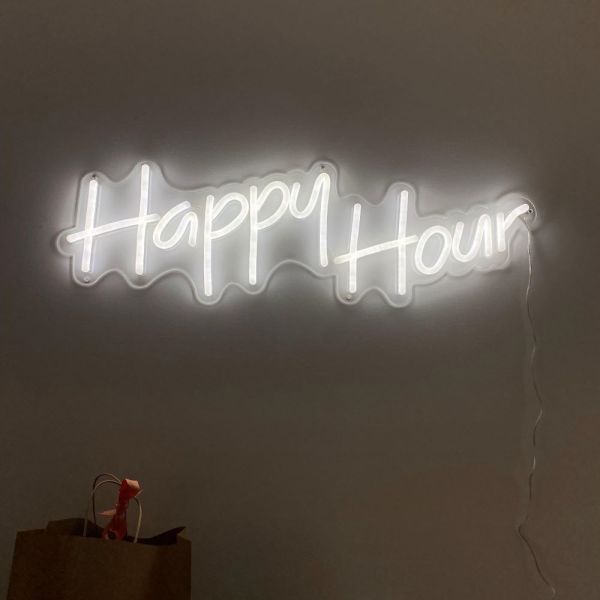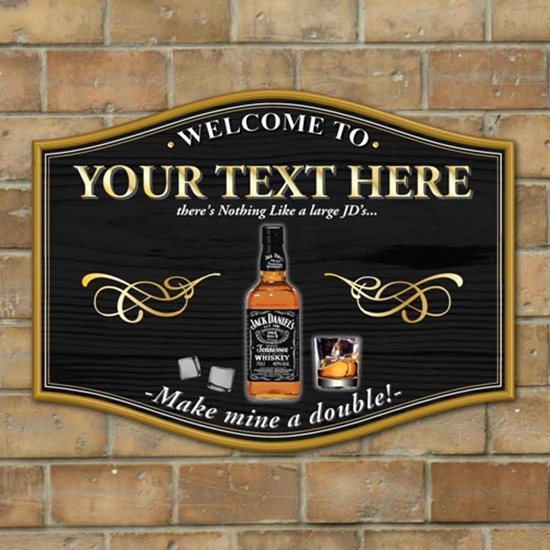Recommended News On Choosing Hanging Signs
Wiki Article
What Are The Distinctions Between Bar Signs And Their Different Applications?
The purposes of bar signposts can be quite different. Bar signs serve many distinct purposes. Branding
Goal is to establish and consolidate the brand image of the bar.
Features: Include the bar's name, logo and signature colors. It is designed to be a noticeable aspect that represents the bar's overall theme and style.
Examples: Neon signs with the bar's logo, custom metal signs bearing the bar's name.
2. Information
Use: Provide important information to patrons about the bar.
Features: Clear and easy-to-read text that provides essential information such as hours of operation Wi-Fi passwords, hours of operation, household rules or restroom areas.
Signs that point to the restrooms or display hours of operation on walls near entrances are examples.
3. Decorate your house with these decorative items
The goal is to enhance the appearance and ambience of the bar.
The features are generally more creatively themed and contribute to the overall decor of the bar. The bar could or might not contain any text.
Examples include: old beer advertisements, funny signs or funky artwork.
4. Promotional Materials
Purpose: To promote specific products, events, or specials.
Features: Design with attractive graphics that showcase special offers or upcoming events. Certain elements could be temporarily or modifyable.
Examples: chalkboards that list daily specials, banners promoting special deals during happy hour or posters for an upcoming event.
5. Directional
Use: To direct patrons to the right bar.
Features: Clear arrows or instructions to help customers navigate the space, such as finding the bathrooms, exits or other locations of the bar.
Examples: Arrows for direction within different seating areas.
6. Regulatory/Compliance
Goal : To ensure that the safety standards are met and to comply with legal standards.
Specifications: Signs required for legal obligations. These include signs to indicate smoke-free zones, occupancy limits and emergency exits.
For instance, "No Smoking", "Occupancy Limit" and "Emergency Exit" signs.
7. Interactive
The goal is to engage customers and create an interactive experience.
Features: Element that encourage patron participation, like surfaces that you can write on or digital interaction.
Signs with QR Codes connecting to menus that are digital (or social media) or chalkboards that allow messages to customers are some examples.
8. Thematic
Create a certain theme or atmosphere.
The signs are designed to align with the bar's theme, contributing to the overall experience and ambience.
Examples: Pirate signs in nautical bars or rustic wooden signs in a bar with a country theme.
9. Menu
The menu will be displayed on the bar.
Features: Lists clearly foods and drinks and food items, usually with prices. Can be static or changeable.
Examples include rotating digital menus that rotate on screens or wall-mounted menus.
Each bar sign has specific functions and is made to blend into the bar's environment. By understanding these differences bar owners can choose and install signs in a way that will improve the experience of patrons and satisfy operational requirements. Check out the best her response on bar signs for home bar for website info including a bar sign, pub wall sign, personalised signs for home bar, pub signs to buy, garden pub signs, pub signs, hanging pub signs for garden, pub sign hanging, to the pub sign, bar signs and more.

How Are Bar Signs Different With Regards To Lighting?
Lighting can have a major impact on bar signs, including their general impact, visibility and atmosphere. Here are a few of the main ways that lighting affects bar signs. Neon Signs
Characteristics: Bright, colorful, classic.
Lighting Neon gas-filled tubes produce light when charged electrically.
Uses: Perfect for creating a vintage retro style, commonly used to create logos or bar names as well as striking designs.
Benefits: It's visible even at a distance and it is nostalgic.
The material is brittle and can be costly to fix.
2. LED Signs
Characteristics: Energy-efficient, versatile, modern.
Lighting: Make use of light-emitting diodes (LEDs) to produce bright and vibrant light.
Uses: Can be used to create outdoor or indoor signs, and also customizable displays.
Benefits include: long-lasting, energy efficient. Animations and color shifts can be programed.
Some disadvantages include the initial cost however, it is cheaper to pay for energy and maintenance bills.
3. Backlit Signs
Characteristics: Elegant, sophisticated, subtle.
Lighting: Uses lighting with fluorescent or LEDs on a translucent surface to create soft light.
Applications: For modern bar signs menu boards and branding elements, for example.
Advantages: Provides a clean and professional look, enhances visibility in dim lighting.
Advantages: More complicated installation and higher upfront cost.
4. Signs Edge-Lit
Characteristics: Sleek, contemporary, stylish.
Lighting: Use LEDs to illuminate the edge of a sign, typically acrylic.
Applications: Suitable for modern, minimalist designs. Used for directional or informational signs.
Advantages Creates a sophisticated and distinct look.
Advantages: Only available in certain designs.
5. Ambient/Accent Lighting
Characteristics: Subtle, atmospheric, decorative.
Lighting Indirect lighting is utilized to emphasize or highlight certain indications.
Uses: Creates a calm atmosphere, and is often utilized in conjunction with themed décor or art.
Benefits: It adds an atmosphere and depth. It can create a welcoming and cozy environment.
The direct light provided might not be enough to allow for a clear reading.
6. Marquee Signs
Characteristics: Bold, theatrical, eye-catching.
Lighting: Uses multiple light bulbs and LEDs to light the sign.
Uses: Signs on the outside, event promotion, and retro-style cinemas are very popular.
Advantages: Attractive and noticeable.
It can be expensive to keep up and is a frequent task.
7. Projection Signs
Characteristics: Dynamic, innovative, versatile.
Lighting: Make use of projectors to cast light and images onto the surface.
Applications: Can be used for events and promotions that last only a few days.
Advantages: Easily changeable No physical structure needed.
Negatives
8. Fluorescent Signs
Characteristics: Bright, cost-effective, traditional.
Lighting: The use of fluorescent tubes for lighting.
Applications: Typically used to create large indoor and outdoor signs.
The vibrant colors and bright colors are perfect for large-scale signs However, they're also affordable.
Disadvantages
Lighting Things to Consider
Visibility
Neon and LED Signs: Ideal for attracting attention from a distance, particularly in low light.
Backlit or edge-lit Signs: These are great for making your signs more readable, and for creating an elegant and professional appearance.
Energy Efficiency
LED signs are extremely energy efficient, and last a long duration.
Neon and fluorescent signs are not as efficient in energy use and neon signs are more fragile.
Aesthetic Appeal
Neon and Marquee Signs: Great for retro and vintage styles.
The perfect choice for clean and modern designs are signs that have an edge lit with backlighting.
Ambient lighting can enhance the overall atmosphere.
Maintenance
LED Signs: Low maintenance and long-lasting.
The neon and fluorescent signs could require more frequent maintenance and repairs.
Cost
Backlit and LED Signs: Costs upfront are higher, but they are lower operating costs.
Signs made of fluorescent are cheaper initially, but they consume more energy in the long term.
Flexibility
The Projection Signs and LED signs offer a high degree of flexibility when it comes to changing the display and content.
Traditional Signs - More rigid However, they often provide a desired look.
By selecting the right type and color of lighting Bar owners can enhance the visibility of their establishment, create an ideal atmosphere and effectively communicate the brand and marketing messages. Have a look at the recommended bar runners blog for more info including pub signs for garden, make your own bar sign, pub signs for home bars, personalised cocktail sign, personalised outdoor bar signs, pub signs for garden, pub sign design ideas, a bar sign, to the pub sign, bar signs for home bar and more.

How Do Bar Signs Differ From One Another In The Area Of Interactivity?
The interaction of bar signs may vary to draw customers and enhance their experience. Here are the differences between bar signs with respect to their interactive capabilities. Static Signs
Traditional Design: Static signs relay information with no interactive elements.
Common Types: Printed posters, painted murals and the standard neon sign.
2. Digital Displays
Dynamic Content: Digital signs allow for live updates, animations, and multimedia content.
Touchscreens allow interactive menus, games and games, as well as advertising content.
Benefits : Attract attention by delivering dynamic information. Engage patrons.
3. QR Codes
QR Codes on Signs: QR codes can be used to provide a link to menus, promotions, or social media profiles.
The advantages of the app include: Easy access for additional information and promotions.
4. LED Screens
LED screens permit dynamic messaging, such as scrolling text and videos.
LCDs with touch-enabled touchscreens allow customers to interact with the content. For example they can choose the menu options or play games.
Benefits include: Getting your audience's attention by delivering immersive experiences.
5. Projection Mapping
Immersive Experiences: Projection mapping converts surfaces to dynamic displays that provide interactive visuals and storytelling.
Interactivity: Guests can engage with projection elements such as interactive gaming or experiences in virtual reality.
Benefits: Increase the ambiance and increase social interaction.
6. Augmented Reality
AR enhances the reality by overlaying digital media onto the physical world. This allows for interactive experiences.
AR-enabled signs: AR signs allow customers to interact and see virtual elements, such as cocktails, or play virtual games.
Benefits: Unique experiences engage customers and help you differentiate your bar from other bars.
7. Motion Sensors
Motion sensors detect movement and trigger interactive responses in the signage.
Interactivity Signs react to the movements of patrons by showing animations or changing the contents. They also send personalized messages.
Benefits : Greater engagement, immersive environments and surprising and delighting patrons.
8. Social Media Integration
Online Interaction: Signs that feature hashtags or social media handles may encourage patrons online interaction.
User-Generated Media: Ask customers to share images of signage through social media sites. This will improve the visibility and reach.
Benefits: Increase the involvement of communities, boost brand recognition, and create user-generated content.
9. Interactive Lighting
Dynamic Effects - LEDs and neon signs that can respond to touch or sound and even movement.
Signs can be interactive and change the colors, brightness levels, or patterns, depending on how people interact with them or the environment.
Benefits: Create a sense of immersion, enhance ambiance, and draw interest.
10. Gamification
Signs with interactive games or challenges to entertain patrons, and encourage participation.
You may offer discounts or rewards for playing challenges or games.
Benefits include: increasing the duration of stay, encouraging interactions with others, and promoting return visits.
Bar owners who incorporate interactive elements in their signage can create engaging experiences that draw customers' attention, enhance brand awareness, as well as differentiate them in a highly competitive market. Follow the top twofb.com bar signs for blog tips including design a pub sign, personalised metal bar signs, large pub sign, home made bar sign, hanging pub signs, the staying inn bar sign, personalised metal pub signs, pub signs, garden pub signs, personalised pub signs for garden and more.
